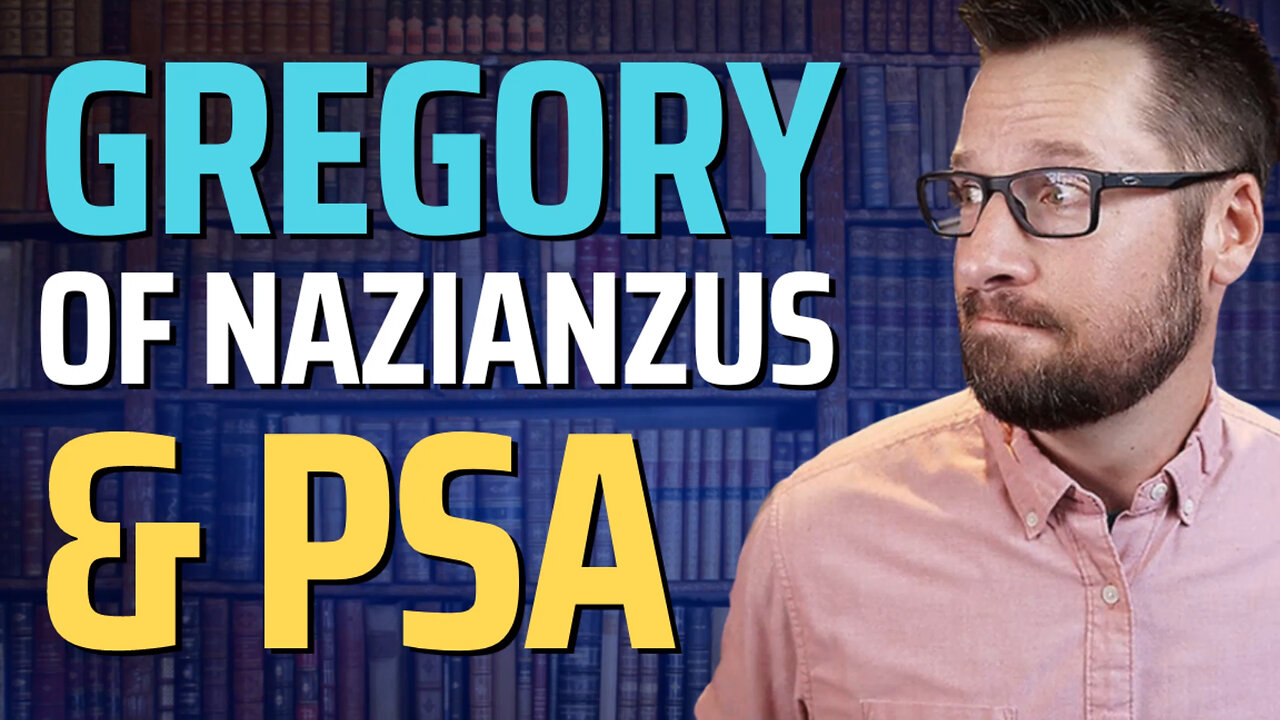Premium Only Content

Mike Winger Critique Episode 5: Did Gregory of Nazianzus Teach PSA?
Gregory of Nazianzus, revered as an early developer of Christological concepts, stands among the most important Church Fathers in Eastern Orthodoxy. How curious that Mike Winger cites this figure as a proponent of the much later doctrine of penal-substitutionary atonement (PSA)! In this video, Warren McGrew welcomes back Paul Vendredi to refute Winger’s claims about this saint.
Gregory did not view the cross as a means of bearing God's wrath or enabling forgiveness. Rather, he saw Christ’s work as an assumption of human nature designed to heal and redeem it. The phrase Gregory used to convey this concept has become legendary in Eastern Orthodoxy and is quoted frequently when discussing the reason for Christ's incarnation and crucifixion. Both at the popular and scholarly levels, Gregory’s turn of phrase is referenced to emphasize that what was not assumed by Christ could not be healed, and what was united to his divinity was saved. Gregory's theology, as expressed in a letter he wrote criticizing a particular heterodox Christology known as Apollinarianism, emphasizes that for Christ to save humanity fully, he must assume and heal in their entirety the nature of what was fallen.
Gregory’s idea that what Christ has not assumed he has not healed, concludes with humanity’s apotheosis or divinization. Paul criticizes Winger for not acknowledging this aspect of Gregory's theology. Paul also clarifies that when Gregory refers to Christ as sin and a curse (2 Corinthians 5;21 and Galatians 3;13), it is a metaphor for the Incarnation, not a literal transformation.
Paul then returns to Gregory's Theology of the Restored Icon, which posits that mankind was created in God's image but was damaged in a fall provoked by Satan's envy, resulting in the need for restoration. According to Gregory, demons, who envied mankind and could not bear the thought of men attaining to a higher state than they, caused humanity’s exile from the Tree of Life. God's response was to become man, assuming human nature while remaining unchanged, to heal and restore humanity. Paul refers to this concept as the restored-icon model (RIM) which emphasizes the unification of damaged humanity with God's divinity rather than PSA’s ludicrous machinery of penalties, substitutions, and infractions.
Paul takes a moment to examine the Christology of Winger’s mentor, William Lane Craig. Craig's perspective on the work of Christ aligns with a wing of the atonement school that deems Christ's life irrelevant to salvation. Notable theologians like Millard Erickson and Lewis Sperry Chafer are speculated to hold or have held this view, while Walter Martin (a famous counter-cultist) and W.O. Vaught (who pastored Bill Clinton) explicitly teach it.
Recapitulation is a theory that Christ heals all aspects of humanity and inanimate things by recapitulating their history. The RIM posits that Christ makes healing available to humans, who then cooperate with Him in a lifelong struggle to restore their divine image. The speaker also introduces the converse RIM, which can be found in the writings of the church fathers. This model describes individuals who have the healing of Christ made available to them but choose not to cooperate and instead indulge in their sins. Paul suggests that this idea can be inferred from the first two chapters of Romans, where human beings are described as becoming debased by their sins and ultimately becoming icons of the sin they cherish. In the afterlife, those who have cooperated with Christ experience God's love as heavenly rays, while those who have rejected Christ experience God's love as hellfire.
-
 LIVE
LIVE
The Kevin Trudeau Show
3 hours agoWhat Men Do Wrong In Relationships | Ep. 75
126 watching -
 12:41
12:41
Gun Owners Of America
1 hour agoWe're Fighting Back Against Mexico In Court!
82 -
 LIVE
LIVE
The Charlie Kirk Show
2 hours agoThe CR Quagmire + An Hour of PBD + Catholic in Hollywood | Davis, Patrick Bet David, Rep. Burlison
7,988 watching -
 32:54
32:54
Kicking Mustang
7 hours ago $0.02 earnedWatch the Best Ghillie Sniper Moments of 2024...
61 -
 49:34
49:34
PMG
14 hours ago"Hannah Faulkner and Ron Berutti | NEW SUPREME COURT CASES"
476 -
 28:29
28:29
The Boomer Effect
14 hours agoPondering Life in Modern America
20 -
 1:01:44
1:01:44
Grant Stinchfield
2 hours ago $2.09 earnedDon't Focus on the Drones... Focus on the Mysterious Floating Orbs!
13.3K2 -
 LIVE
LIVE
The Dana Show with Dana Loesch
2 hours agoSPENDING BATTLE COUNTDOWN | The Dana Show LIVE On Rumble!
539 watching -
 59:38
59:38
The Dan Bongino Show
4 hours agoThings Have Changed, It's Trump's GOP Now (Ep. 2390) - 12/18/2024
559K1.19K -
 LIVE
LIVE
Viss
2 hours ago🔴LIVE - Is Delta Force the Best Casual Extraction Shooter? - Delta Force
227 watching